TL;DR
Direct answer: For lasting curb appeal, keep planting simple, set hardscape details right the first time, and use 2–3 inches of mulch kept off trunks and foundations. In low-maintenance front yard landscaping, prioritize drainage, correct walkway widths, tight stone joints, and plant spacing that won’t overgrow. Before you commit, preview multiple layouts and materials on a photo of your home with ReimagineHome.ai for fast, budget-friendly clarity: https://www.reimaginehome.ai/?utm_source=blog
Why Outdoor Design and Curb Appeal Matter Right Now
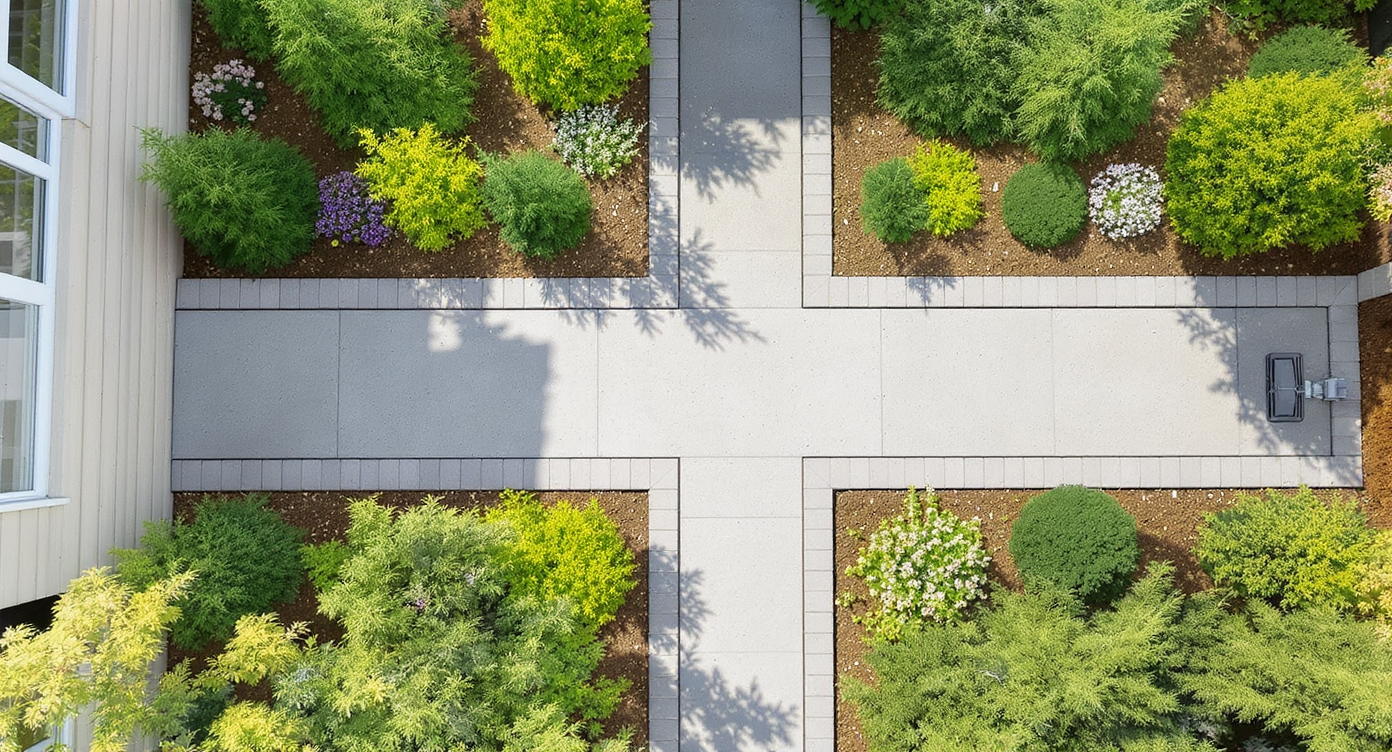
Right-sized garden paths with clean edges and layered planting maximize small yard curb appeal and safety.
Primary garden paths typically range from 36–48 inches wide for comfortable use. That simple dimension sets the tone for legible layouts, safer movement, and a front entry that feels intentional rather than improvised—especially in small yards where every inch counts. Focus on right-sized paths, clean edging, and layered planting; then defend them with good drainage and proper mulch depth. Do those few things and curb appeal stays crisp with less maintenance.
Why Landscaping, Gardening & Hardscaping Are Changing
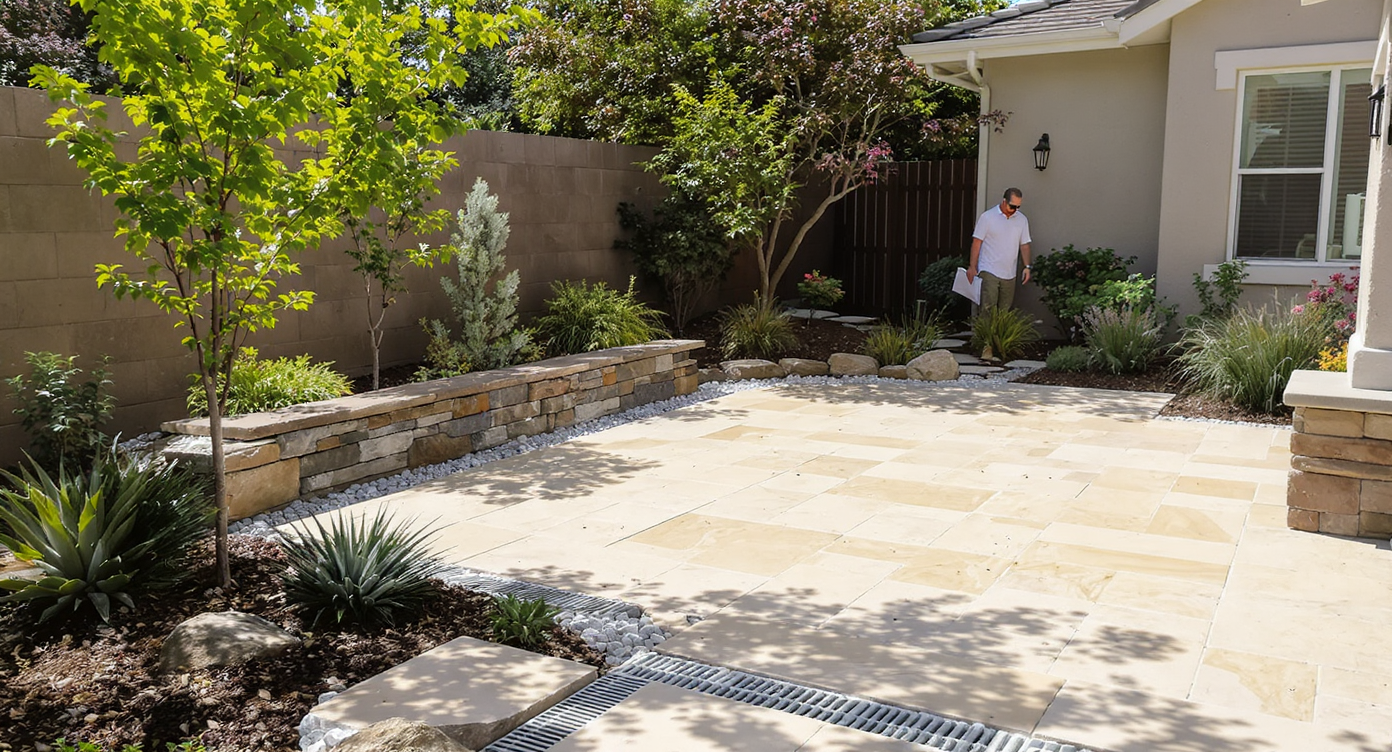
Hardscape elements dominate modern low-maintenance yards, combining style with budget-conscious durability.
Hardscape elements often account for 50–70% of a low-maintenance yard budget. That’s because patios, edging, retaining, and steps determine drainage, mowing lines, and how planting beds actually function day to day. As weather swings grow sharper, water efficiency matters more, and WFH lifestyles push us outside, the expectation is clear: outdoor spaces should look modern, handle storms, and stay easy to care for. • Climate-smart design leans on permeable surfaces, swales, and a 1–2% slope away from structures so water moves without pooling. • Water use drives plant choices toward natives, drought-tolerant shrubs, and smaller lawn shapes that are faster to mow. • Maintenance demands push for fewer, better plants—evergreen bones with seasonal accents—plus mulch that suppresses weeds without smothering stems. • Design expectations have risen: crisp steel or stone edging, tidy joints that don’t sprout weeds, and paths that meet the way people actually move from driveway to door. If you’re debating mulch color, know this: dyed mulch can fade to gray by the first hard season, while natural or composted mulches age more gracefully and feed soil. No matter the color, keep mulch 2–3 inches deep and pulled back from trunks to expose the root flare.
Anecdote
On a sloped entry, the homeowners loved black mulch but hated how it slid onto the sidewalk after rain. The fix was simple: corten steel edging along the walk, a slight regrade to push water into a planting swale, and a switch to natural dark mulch kept 2 inches deep and off the stems. Six months later, the beds read crisp—and sweeping is a once-a-week task, not a daily chore.
Key Landscaping & Hardscaping Trends (and How ReimagineHome.ai Shows Them)

Accurate slopes and plant spacing boost curb appeal—visualized with precision by ReimagineHome.ai for optimal design.
Experts recommend a 1–2% slope for patios for proper drainage—that’s roughly 1⁄8–1⁄4 inch drop per foot away from the house. When hardscaping is graded correctly, plant health improves, paths stay cleaner, and maintenance time drops. • Layered planting and year-round structure Build around evergreen anchors (boxwood, holly, ilex) spaced for mature size, then underplant with perennials and grasses for movement. Keep shrubs 18–24 inches off foundations to promote airflow and reduce mildew. • Stone, gravel, and stepping-stone paths Use 3⁄8-inch or tighter joints and compacted base; wider joints invite weeds. Steel or paver edging along sidewalks prevents mulch from spilling during rain. • Outdoor rooms, seating pockets, fire pits Seat walls are most comfortable at 17–19 inches high with 12–16 inches of seat depth. Group lounge areas where evening shade naturally falls, and keep fire features 10+ feet from structures. • Drought-tolerant and native planting layouts Curate 3–5 species in repeating drifts for cohesion and easier care. Consider native grasses, salvia, echinacea, and region-appropriate evergreens for structure. • Modern curb appeal changes that boost value A continuous path line, a defined entry landing, and restrained plant palettes read as “new.” Clean edges and uniform mulch instantly modernize. How ReimagineHome.ai helps: Upload a photo and preview tighter paver joints, corten steel edging, path widths, patio slope cues, and planting massing at scale. Toggle from black mulch to natural composted bark, test gravel or stone, and compare nighttime lighting overlays before you spend a dollar.
How to Use ReimagineHome.ai to Visualize Yards, Paths & Patios

ReimagineHome.ai helps visualize practical yard layouts with proper plant spacing and hardscape design before installation.
For airflow and maintenance, shrubs should be planted 18–24 inches from foundations. That single spacing rule prevents mulch rot, reduces pests, and leaves room for clean edging and future growth. 1. Upload a clear exterior or yard photo. 2. Pick a style or function (low-maintenance, modern, family-friendly, pollinator-forward, etc.). 3. Test path shapes, patio sizes (start around 12×12 feet for four chairs), steps, and terraces. Maintain a 1–2% slope away from the house. 4. Experiment with planting layers, lighting, and focal points—front-door urns, a low hedge, or a specimen tree set 10–15 feet from the facade for scale. 5. Generate multiple versions and compare before committing. Share the preferred mockup with your contractor to align on widths, edges, and materials. Tip: Use ReimagineHome.ai as a preview engine to resolve details that commonly go wrong onsite—like too-narrow walkways, gaps between edging blocks, or mulch crowding shrub stems. Visuals prevent costly rework.
Real-World Stories — Landscaping & Hardscaping in Action
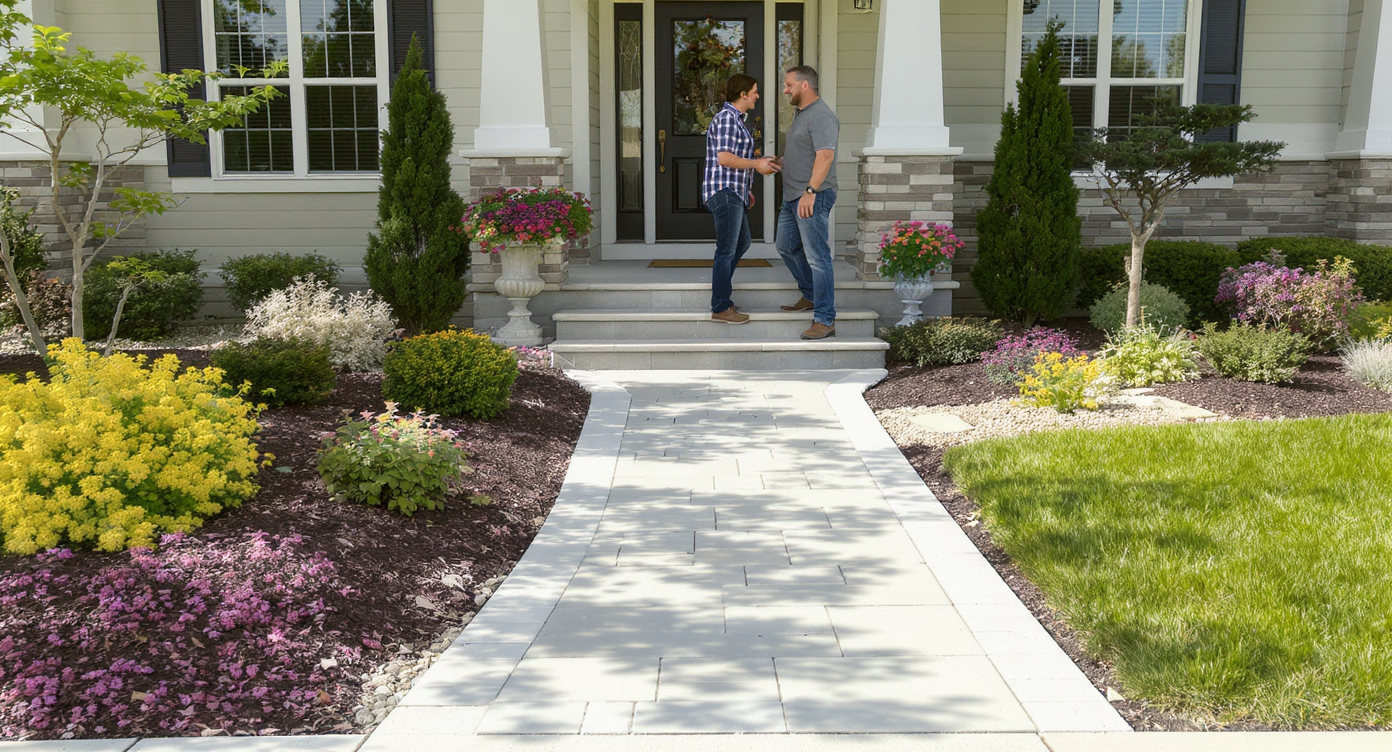
Thoughtful landscaping and hardscaping boost home value and create welcoming front yard statements in real life.
Thoughtful front yard updates can significantly increase perceived home value. Clean lines, correct plant spacing, and restrained materials tell buyers the property is cared for—and that maintenance will be simple. • A small urban yard redesigned with raised beds and stepping stones for usable space. A 42-inch stepping-stone path set in compacted gravel (with 3⁄8-inch joints) replaced a muddy desire line. Beds received 2 inches of composted mulch, pulled back from stems to show root flare. Outcome: fewer weeds, dry shoes after rain, and a yard that looks good year-round. • A seller improving curb appeal ahead of listing. They swapped faded dyed mulch for natural dark fines, added steel edging along the entry walk, and reset the path to 48 inches wide for two-abreast comfort. Outcome: cleaner lines in photos, fewer buyer objections, and a faster sale. • A family yard transformed for play, privacy, and low upkeep. A 14×16-foot patio with a 1–2% slope hosts a small fire pit; evergreen screening and native grasses add movement without high water needs. Outcome: weekend-ready living with less mowing and trimming. Every scenario was visualized first in ReimagineHome.ai to right-size paths, test mulch colors, and place plant masses, avoiding the two most common mistakes: over-paving and overcrowding plants.
Visualization Scenario
The client wanted a 10-foot seating circle, but the mockup showed chairs crowded near the step. In ReimagineHome.ai, we expanded the patio to 14×16 feet, dialed a 1–2% slope, tightened paver joints, and pushed shrubs 24 inches off the foundation. The new layout fit four chairs, a fire feature, and clear walkways—no guesswork onsite.
FAQ
• How do I design a small backyard layout? Keep circulation clear: 36–42-inch paths, one primary destination, and furniture scaled to leave 30–36 inches of walk-around space. Use 2–3 materials max and repeat plant masses for calm. • How do I create low-maintenance landscaping? Limit lawn, choose native or drought-tolerant plants, and mulch 2–3 inches deep while keeping stems and trunks exposed. Use steel or stone edging and 3⁄8-inch paver joints to reduce weeds; irrigate with drip where possible. • Can I preview landscaping ideas using a photo? Yes. Upload a picture to ReimagineHome.ai to instantly visualize paths, patios, edging, mulch options, lighting, and planting layouts before hiring a contractor or buying materials. • How far should shrubs be from my foundation? Maintain an 18–24-inch offset from walls and keep mulch pulled back to reveal the root flare and prevent stem rot. • What materials work best for modern hardscaping? Concrete, large-format pavers, natural stone, and gravel all work—keep color to 2–3 complementary tones and joints at 3⁄8 inch or tighter. Always build on a compacted base and maintain a 1–2% slope away from structures.
Visualize Your Home’s Next Chapter
Seat walls are most comfortable at 17–19 inches high—comfort is measurable, and so is beauty that lasts. Imagine morning light on a gravel path, a soft hedge guiding guests to the door, and a patio that drains perfectly after a summer storm. Evenings glow under layered lighting, kids weave through stepping stones, and the front bed stays neat because spacing and edging were done right from the start. Before you break ground, explore every possibility. Try ReimagineHome.ai with a single photo.
.svg)

.svg)


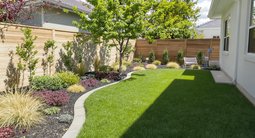
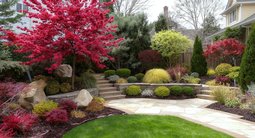







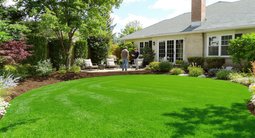


.png)